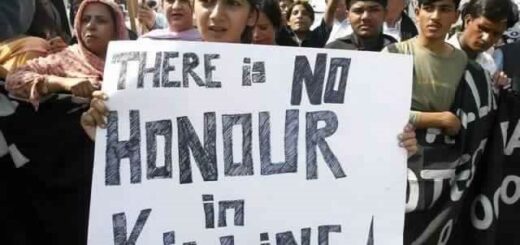National Current Affairs – UPSC/IAS Exams- 23rd May 2019
Competition Commission of India
Topic: Polity and Governance
In News: Competition Commission of India celebrates its 10th Annual Day on 20th May 2019.
More on the Topic
- Competition Commission of India is a body of the Government of India responsible for enforcing The Competition Act, 2002 throughout India and to prevent activities that have an adverse effect on competition in India.
- It was established on 14 October 2003.
- It became fully functional in May 2009.
- CCI is quasi-judicial statutory body established under The Competition Act, 2002.
- The objectives of the Act are sought to be achieved through the Competition Commission of India (CCI).
- CCI earlier consisted of a Chairperson and 6 Members appointed by the Central Government. Government has now approved reduction of members from 6 to 3.
- The duty of the Commission is to eliminate practices having adverse effect on competition, promote and sustain competition, protect the interests of consumers and ensure freedom of trade in the markets of India.
- The Commission is also required to give opinion on competition issues on a reference received from a statutory authority established under any law and to undertake competition advocacy, create public awareness and impart training on competition issues.
- The Competition Act, 2002 prohibits anti-competitive agreements, abuse of dominant position by enterprises and regulates combinations (acquisition, acquiring of control and Merger and acquisition), which causes or likely to cause an appreciable adverse effect on competition within India.
To achieve its objectives, the Competition Commission of India endeavours to do the following:
- Make the markets work for the benefit and welfare of consumers.
- Ensure fair and healthy competition in economic activities in the country for faster and inclusive growth and development of economy.
- Implement competition policies with an aim to effectuate the most efficient utilization of economic resources.
- Develop and nurture effective relations and interactions with sectoral regulators to ensure smooth alignment of sectoral regulatory laws in tandem with the competition law.
- Effectively carry out competition advocacy and spread the information on benefits of competition among all stakeholders to establish and nurture competition culture in Indian economy.
Model Mains Question: What are the issues associated with the functioning of competition commission of India. Analyze what are the needed for reforms.
Source: The Hindu
Not all animals migrate by choice’ campaign
Topic: Environment and Ecology
In News: Ahead of the International Day of Biological Diversity celebrated on May 22, UN Environment India and Wildlife Crime Control Bureau (WCCB) of India launched an awareness campaign ‘Not all animals migrate by choice’ to be displayed at major airports across the country.
More on the Topic:
- Illegal wildlife trade is driving species to the brink of extinction.
- A thriving industry with organized wildlife crime chains spreading across the world, in India, illegal trade in wildlife has seen a sharp rise.
- The campaign ‘Not all animals migrate by choice’ aims at creating awareness and garnering public support for the protection and conservation of wildlife, prevention of smuggling and reduction in demand for wildlife products.
- The campaign also complements worldwide action on illegal trade in wildlife through UN Environment’s global campaign, Wild for Life.
- In the first phase of the campaign, Tiger, Pangolin, Star Tortoise and Tokay Gecko have been chosen as they are highly endangered due to illegal trading in International markets.
- Tiger is traded for its skin, bones and body parts; Pangolin, the most illegally traded wild mammal on the planet is trafficked for its meat and its scales are used in traditional medicines; Star Tortoise for meat and pet trade and Tokay Gecko in traditional medicine mostly into South East Asia and particularly Chinese Markets.
- Phase two will see more threatened species and explore other routes of trafficking.
- In collaboration with the Airports Authority of India and GMR Group, the campaign will travel across 22 airports across India over the next year.
- Both WCCB and UN Environment initiated a comprehensive approach with a focus on awareness building of various stakeholders towards the issue of prevention of illegal trade and smuggling of wildlife and wildlife products through exit points. The awareness campaign is expected to complement the efforts of the Govt. Agencies.
Wildlife Crime Control Bureau:
- Wildlife Crime Control Bureau is a statutory multi-disciplinary body established by the Government of India under the Ministry of Environment and Forests, to combat organized wildlife crime in the country.
- Under Section 38 (Z) of the Wild Life (Protection) Act, 1972, it is mandated to collect and collate intelligence related to organized wildlife crime activities and to disseminate the same to State and other enforcement agencies for immediate action so as to apprehend the criminals; to establish a centralized wildlife crime data bank; co-ordinate actions by various agencies in connection with the enforcement of the provisions of the Act; assist foreign authorities and international organization concerned to facilitate co-ordination and universal action for wildlife crime control; capacity building of the wildlife crime enforcement agencies for scientific and professional investigation into wildlife crimes and assist State Governments to ensure success in prosecutions related to wildlife crimes; and advise the Government of India on issues relating to wildlife crimes having national and international ramifications, relevant policy and laws.
- It also assists and advises the Customs authorities in inspection of the consignments of flora & fauna as per the provisions of Wild Life Protection Act, CITES and EXIM Policy governing such an item.
Source: PIB
Ongole Breed Cattle
Topic: Environment and Ecology
In News: Vice-President M Venkaiah Naidu has said that the globally popular Ongole cattle breed stands neglected in the country.
More on the topic:
- Ongole cattle is an indigenous cattle breed that originates from Prakasam District in the state of Andhra Pradesh in India.
- The breed derives its name from the place the breed originates from, Ongole.
- The Ongole breed of cattle, Bos Indicus, has a great demand as it is said to possess resistance to both foot and mouth disease and mad cow disease.
- These cattle are commonly used in bull fights in Mexico and some parts of East Africa due to their strength and aggressiveness.
- They also participate in traditional bull fights in Andhra Pradesh and Tamil Nadu.
- Ongole milk has a butterfat content of over five percent. This results in large, well-nourished calves with considerable growth by the time of weaning. Ongole cows stay close to their calves to protect them from predatory animals
Source: The Hindu
Crested ibises fly
Topic: Environment and Ecology
In News: Crested ibises fly endangered bird was reintroduced to the wild by South Korean authorities , four decades after it went extinct on the peninsula.
More on the Topic:
- The crested ibis is listed as South Korea’s National Monument number 198, but was last seen in the wild in 1979 in the demilitarized zone dividing the peninsula.
- China and Japan are also part of the species’ natural range, but the species was driven to the edge of extinction partially because pesticide use eliminated its food sources until captive breeding programmes were set up.
- Starting with birds donated by Beijing, the South Korean captive-bred population has reached 363, and the Environment Ministry said 40 of them had been selected and released into the Upo wetland 350 km southeast of Seoul.
- The species, Nipponia nippon , is also known as the Japanese crested ibis, but is best known for a popular children’s song composed in the 1920s, when Korea was under Japanese colonial rule.
- The song describes the sound of the bird’s call as a sad reminder of a lost mother, and was banned by the Japanese authorities who reportedly saw it as a form of anti-colonial resistance but became popular again after Korea regained its independence in 1945.
Source: The Hindu
International Day for Biological Diversity
Topic: Environment and Ecology
In News: United Nations (UN) has adopted May 22 as The International Day for Biological Diversity (IDB) to increase understanding and awareness of biodiversity issues. Objective of observing this day is to spread awareness about species turning endangered or going to extinct.
More on the Topic:
- 2019 theme is – “Our Biodiversity, Our Food, Our Health.”
- The International Day for Biological Diversity (or World Biodiversity Day) is a United Nations–sanctioned international day for the promotion of biodiversity issues.
- The International Day for Biological Diversity falls within the scope of the UN Post-2015 Development Agenda’s Sustainable Development Goals.
- In this larger initiative of international cooperation, the topic of biodiversity concerns stakeholders in sustainable agriculture; desertification, land degradation and drought; water and sanitation; health and sustainable development; energy; science, technology and innovation, knowledge-sharing and capacity-building; urban resilience and adaptation; sustainable transport; climate change and disaster risk reduction; oceans and seas; forests; vulnerable groups including indigenous peoples; and food security.
- The critical role of biodiversity in sustainable development was recognized in a Rio+20 outcome document, “The World We Want: A Future for All”.
- From its creation by the Second Committee of the UN General Assembly in 1993 until 2000, it was held on December 29 to celebrate the day the Convention on Biological Diversity went into effect.
- On December 20, 2000,the date was shifted to commemorate the adoption of the Convention on May 22, 1992 at the Rio Earth Summit, and partly to avoid the many other holidays that occur in late December.
Source: The Hindu
Exit Polls in India
Topic: Polity and Governance
In News: An election exit poll is a poll of voters taken soon after a voter walks out after casting his or her vote. It is considered as an indicator to which party forms the government.
Unlike an opinion poll, which asks for whom the voter plans to vote, an exit poll asks for whom the voter actually voted.
More on the Topic:
- In February 2010, restrictions were imposed on exit polls through the introduction of Section 126(A) in the RPA Act.
- The EC advises electronic and print media not to publish or publicise any article or programme related to the dissemination of results of exit polls during the prohibited period.
Why is the Election Commission (EC) critical of these polls?
- Both kinds of polls can be controversial if the agency conducting them is perceived to be biased.
- The projections of these surveys can be influenced by the choice, wording and timing of the questions, and by the nature of the sample drawn.
- Political parties often allege that many opinion and exit polls are motivated and sponsored by their rivals, and could have a distorting effect on the choices voters make in a protracted election, rather than simply reflecting public sentiment or views.
The statutory backing:
- The Constitution Bench of the apex court observed in 1999 that the EC cannot enforce any guidelines to ban such polls in the absence of statutory sanction.
- In 2004, the EC approached the Law Ministry seeking an amendment to the Representation of the People Act to provide for a ban on both exit and opinion polls during a period specified by the Commission.
- In February 2010, restrictions were imposed only on exit polls through the introduction of Section 126(A) in the RPA.
- In November 2013, the EC held consultations with political parties to revive its demand to restrict pre-election opinion polls as well from the date of notification of elections until the end of polling.
- The suggestion was sent to the Law Ministry, but no action has been taken on it so far.
Source: The Hindu



















